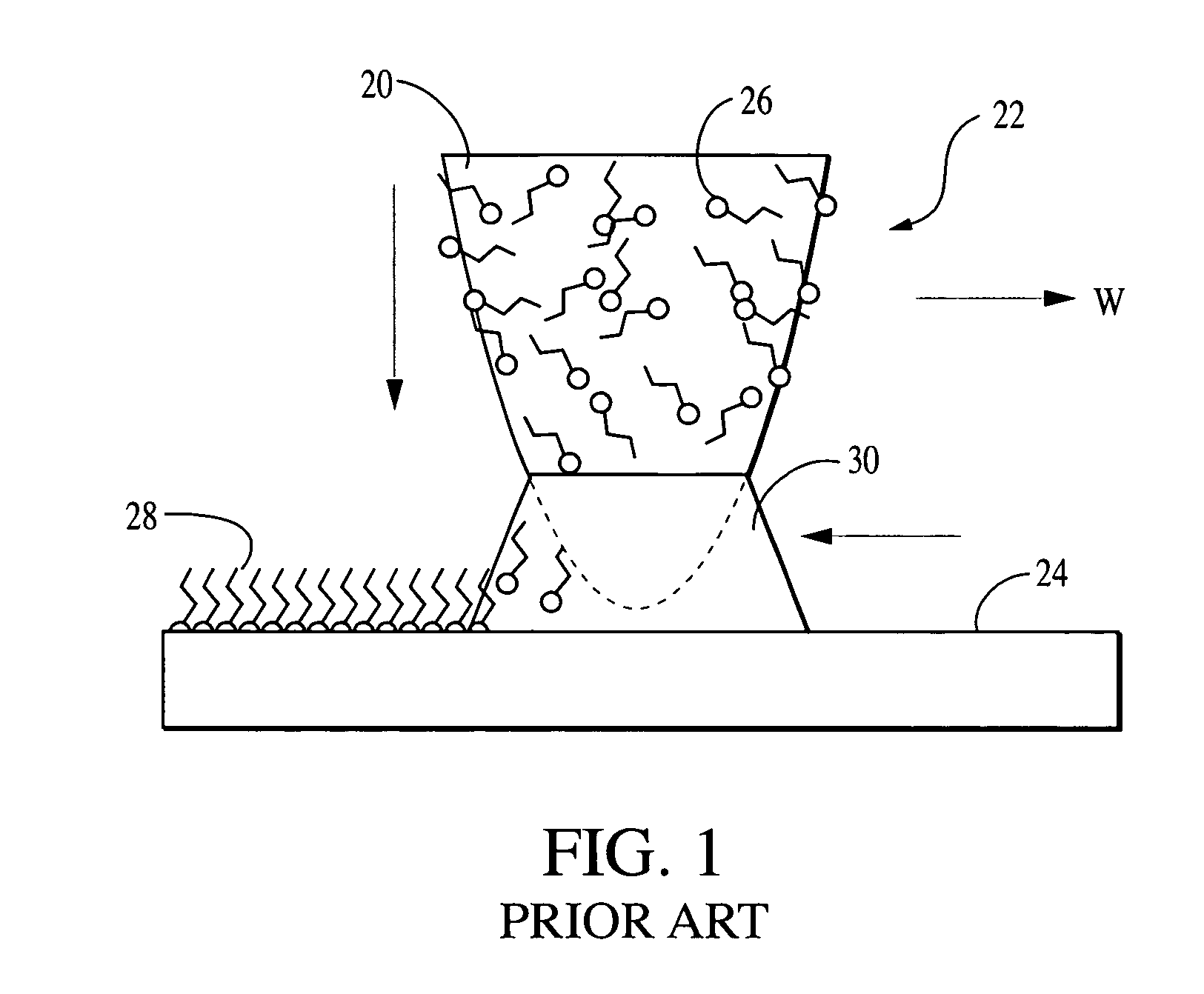Parallel, individually addressable probes for nanolithography
a nanolithography and probe technology, applied in the field of parallel, individually addressable probes for nanolithography, can solve the problems of invariably complex and expensive systems, limited optical diffraction in the resolution of conventional projection optical lithographic systems, still the most widely used in the microelectronics industry, etc., and achieve the effect of increasing the temperature of the resistor and enhancing the extent of thermal bending
- Summary
- Abstract
- Description
- Claims
- Application Information
AI Technical Summary
Benefits of technology
Problems solved by technology
Method used
Image
Examples
Embodiment Construction
[0029] Generally speaking, the present invention provides active probes and active probe arrays, which are designed to achieve direct-write nanolithography, such as DPN. Devices according to the present invention can generate sub-100 nm patterns in a high speed, parallel, and controllable fashion. The active probe arrays offer greater functionality by allowing actuation of individual probes through supplying current or voltage to an actuator of the probe. The present invention is primarily directed to methods and devices for parallel DPN using active probe arrays, and methods for fabricating active probes and active probe arrays.
[0030] The active probe array can also be used for other existing or future surface patterning and lithography methods based on the scanning probe microscope (SPM) instrument family. An atomic force microscope (AFM) is considered a member of the SPM instrument family. Examples of such lithography systems include local thermal oxidation and displacement lith...
PUM
| Property | Measurement | Unit |
|---|---|---|
| speed | aaaaa | aaaaa |
| optical diffraction | aaaaa | aaaaa |
| energy | aaaaa | aaaaa |
Abstract
Description
Claims
Application Information
 Login to View More
Login to View More - R&D
- Intellectual Property
- Life Sciences
- Materials
- Tech Scout
- Unparalleled Data Quality
- Higher Quality Content
- 60% Fewer Hallucinations
Browse by: Latest US Patents, China's latest patents, Technical Efficacy Thesaurus, Application Domain, Technology Topic, Popular Technical Reports.
© 2025 PatSnap. All rights reserved.Legal|Privacy policy|Modern Slavery Act Transparency Statement|Sitemap|About US| Contact US: help@patsnap.com



